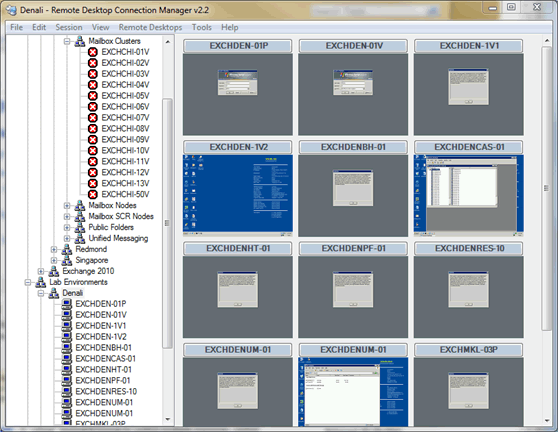

- LAUNCH MICROSOFT REMOTE DESKTOP MANAGER HOW TO
- LAUNCH MICROSOFT REMOTE DESKTOP MANAGER INSTALL
- LAUNCH MICROSOFT REMOTE DESKTOP MANAGER SERIAL
- LAUNCH MICROSOFT REMOTE DESKTOP MANAGER LICENSE
It will launch and auto-register the Agent to automatically start with Windows.Ģ.Download Remote Desktop Manager Agent from, and install the agent on the remote computer.ģ.Copy the files, and RDMAgent.exe from the installation folder of the Remote Desktop Manager version that is used by your team, orĭownload the zip file containing those files at and deploy them on the remote host in the folder of your choice. Please consult the documentation of your operating system for details.ġ.Install Remote Desktop Manager and select Tools – More Tools – RDM Agent. Method 1 below performs that automatically, but in other cases, you must configure this manually using Windows features ( startup folder or Run registry key). The Remote Desktop Manager Agent must be configured to automatically start when a Windows session is established. The file based script variables (.ps1) will be resolved prior to sending the script to the destination host. You can use Remote Desktop Manager variables while running file based scripts (.ps1) within the command. %windir%, basically all the ones surrounded by percent signs) will be resolved on the remote host at execution time. $HOST$, basically all the ones surrounded by dollar signs) are resolved on the client against the running session, while environment variables (i.e.

It supports both environment and Remote Desktop Manager variables. Since Remote Desktop Manager uses a secure RDP channel to communicate with the Remote Desktop Manager Agent, it can only operate against Windows-based hosts. The Remote Desktop Manager Agent can run commands on remote hosts, but what is really useful is that it can send commands to multiple hosts at the same time. The information in this article is provided As Is without warranty of any kind.Please note that if your Windows profile is corrupted, Remote Desktop Manager Agent and Remote Desktop Manager Jump might not work.
LAUNCH MICROSOFT REMOTE DESKTOP MANAGER LICENSE
STEP 1 REGISTER YOUR LICENSE Choose your advanced data source. Please note that you need to enter the information exactly the way it is listed in the email that you received.
LAUNCH MICROSOFT REMOTE DESKTOP MANAGER SERIAL
Go to Help Register Version, and enter your user name, email address and serial number. MsiExec.exe /x /qnĪlways make sure to test everything in a development environment prior to implementing anything into production. Start by registering your version of Remote Desktop Manager. You will also find entries in the Start Menu, Installation Directory, and Programs and Features in the Control Panel.

Downloadthe rdcman.msi to a folder created at (C:\Downloads).Navigateto: Remote Desktop Connection Manager 2.7.Remote Desktop Connection Manager 2.7 Silent Install (MSI) Powershell.exe -ExecutionPolicy ByPass -File ".\Uninstall-RDCMan.ps1" Powershell.exe -ExecutionPolicy ByPass -File ".\Install-RDCMan.ps1" Powershell.exe -ExecutionPolicy ByPass -File ".\Install-RDCMan.ps1"Īfter a few moments you will find Remote Desktop Connection Manager (RDCMan) entries in the Start Menu and Installation Directory.Open an Elevated Command Prompt by Right-Clicking on Command Prompt and select Run as Administrator.Save the file to C:\Downloads and name it: Install-RDCMan.ps1.$Shortcut = $WScriptShell.CreateShortcut($ShortcutFile) $WScriptShell = New-Object -ComObject WScript.Shell $ShortcutFile = "$env:ALLUSERSPROFILE\Microsoft\Windows\Start Menu\Programs\Remote Desktop Connection Manager.lnk" $TargetFile = "$env:ProgramFiles\Sysinternals\RDCMan.exe" Open Notepad or your favorite text editorĮxpand-Archive -Path '.\RDCMan.zip' -DestinationPath 'C:\Program Files\Sysinternals' -Force.Download & Copy the RDCMan.zip to a folder created at (C:\Downloads).

LAUNCH MICROSOFT REMOTE DESKTOP MANAGER HOW TO
How to Install Remote Desktop Connection Manager (RDCMan) Silently Remote Desktop Connection Manager (RDCMan) Silent Install


 0 kommentar(er)
0 kommentar(er)
